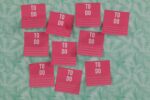Decoding the Jargon: A Student’s Guide to Laptop Processors, RAM, and Storage

A reliable laptop is no longer a luxury but an indispensable tool for every student in today’s academic landscape. From research papers and online lectures to collaborative projects and creative endeavors, your laptop is the central hub of your educational journey. With a vast array of options on the market, choosing the right one can feel overwhelming.
This article cuts through the noise, focusing on the best laptops for students by diving deep into their core specifications. We’ll explore our top 7 recommendations, emphasizing what truly matters to help you make an informed decision that supports your academic success.
Understanding the Core: Processors, RAM, and Storage for Students
When selecting a laptop, understanding its internal components is crucial. These three elements—the processor, RAM, and storage—form the backbone of your laptop’s performance, directly impacting how efficiently you can complete your student tasks. Explore this list of the core components we used to build our best laptops for students list.
Processors (CPU): The Central Processing Unit (CPU) is often called the “brain” of your laptop, responsible for executing instructions and performing calculations. Different processor tiers offer varying levels of power and efficiency, directly influencing how smoothly your applications run.
- Intel Core i3 / AMD Ryzen 3: Ideal for basic student tasks like web browsing, word processing, email, and light multimedia consumption. Great for budget-conscious users.
- Intel Core i5 / AMD Ryzen 5: The sweet spot for most students. These offer a strong balance of performance and price, handling multitasking, more demanding applications, and general productivity with ease.
- Intel Core i7 / AMD Ryzen 7 / Apple M-series (M1, M2, M3): Necessary for students in demanding fields such as engineering, computer science, graphic design, video editing, or 3D modeling. These powerful processors ensure smooth performance even with heavy computational tasks and complex software.
RAM (Random Access Memory): RAM is your laptop’s short-term memory, crucial for multitasking. The more RAM you have, the more applications you can run simultaneously without experiencing slowdowns.
Storage: This is where your operating system, applications, and all your files (documents, photos, videos) reside. The type of storage significantly impacts your laptop’s boot-up times and application loading speeds.
- SSD vs. HDD: SDs use flash memory, making them significantly faster, more durable, and more energy-efficient than traditional hard drives. HDDs, on the other hand, are cheaper per gigabyte, they are generally not recommended as the primary drive for a student laptop due to performance bottlenecks.
- Recommended Sizes: For the best laptops for students, a 256GB SSD is the bare minimum, but 512GB SSD is highly recommended for comfortable storage of documents, presentations, and software. Students with large media files or specialized software might consider 1TB SSD or more.
Beyond the Specs: Other Essential Laptop Features
While processors, RAM, and storage are foundational, a great student laptop offers more. These additional features contribute significantly to usability, comfort, and overall value.
- Battery Life: The best laptops for students promise at least 8-10 hours of real-world usage on a single charge, minimizing the need to carry a charger and hunt for power outlets, ensuring you stay productive wherever you are.
- Portability & Design: A laptop’s weight and slimness directly impact its portability. A lightweight design (under 3 lbs / 1.5 kg) is ideal for most of the best laptops for students. Consider the build quality as well; durable materials like aluminum or reinforced plastics can withstand the rigors of student life better than flimsy plastic.
- Display Quality: The screen is where you’ll spend countless hours. Look for a display with a comfortable size (13-15 inches is common for portability and usability), and a good resolution (Full HD 1920×1080 pixels is the standard). An IPS panel offers wider viewing angles, which is great for collaborative work or watching content with friends.
- Keyboard & Trackpad: For note-taking, essay writing, and coding, a comfortable and responsive keyboard is non-negotiable. Look for good key travel, tactile feedback, and adequate spacing. A precise and smooth trackpad is equally important for navigation without needing an external mouse.
- Connectivity (Ports): Ensure the laptop has the necessary ports for your peripherals and accessories. This typically includes USB-A (for older devices), USB-C (for modern accessories, charging, and external displays), an HDMI port (for projectors or monitors), and a headphone jack. Some students might also need an SD card reader or an Ethernet port.
Our Top 7 Picks: Laptops Optimized for Student Success
Here’s a curated list of the best laptops for students in 2025, categorized to fit various needs and budgets:
Budget Pick 1: Acer Aspire 5 (2025 Edition)
The Acer Aspire 5 remains a top budget-friendly option for students who need reliable performance without breaking the bank. Powered by a 13th Gen Intel Core i5 and 16GB of RAM, it handles multitasking, office work, and light coding with ease.
The full HD display and backlit keyboard make it comfortable for long study sessions, and its fingerprint sensor adds a touch of security. It’s a great starter laptop that covers all the student essentials at a wallet-friendly price.
- Best Features: Balanced performance, Full HD IPS display, backlit keyboard, fingerprint reader.
- Specs:
- Processor: Intel Core i5-13420H
- RAM: 16GB DDR4
- Storage: 512GB SSD
- Price: Approximately $450–$600
- Cons: Plastic build; average battery life (~8 hours)
- Alternatives:
- Lenovo IdeaPad 3 (2025 Model): AMD Ryzen 5 7520U, 8GB RAM, 256GB SSD, priced around $350–$500
- ASUS VivoBook 15 (2025 Edition): Intel Core i5-12450H, 8GB RAM, 512GB SSD, priced around $400–$550
Budget Pick 2: Apple MacBook Air (M1, Late 2020)
Even a few years after its release, the M1 MacBook Air is still one of the best laptops for students who prefer the Apple ecosystem on a budget. It’s thin, light, and fast, with silent fanless operation and up to 18 hours of battery life.
For writing papers, researching, attending Zoom classes, or even basic photo editing, the M1 chip handles it all gracefully. Its longevity and build quality mean students can rely on it for years without worry.
- Best Features: Exceptional battery life, sleek design, seamless macOS experience.
- Specs:
- Processor: Apple M1
- RAM: 8GB Unified Memory
- Storage: 256GB SSD
- Price: Approximately $700
- Cons: Only two USB-C ports; no touchscreen.
- Alternatives:
- Lenovo ThinkPad E16 Gen 1: Intel or AMD options, 16-inch screen, starting under $600
- Acer Aspire 3 (A315-24P): AMD processors, Wi-Fi 6, under $500
Best for Engineering and Computer Science Students: Dell XPS 16
The Dell XPS 16 is a powerhouse designed to meet the intense demands of STEM students. With an Intel Ultra 7 CPU, RTX 4070 GPU, and 32GB of RAM, it’s ideal for compiling code, running simulations, or working in MATLAB and CAD environments.
Its high-resolution OLED display ensures sharp visuals, and the build quality is second to none. This machine balances premium design and top-tier performance, making it one of the best laptops for students in STEM programs, and a long-term investment for future engineers and developers.
- Best Features: Powerful performance, stunning 4K+ OLED display, durable build.
- Specs:
- Processor: Intel Core Ultra 7 155H
- RAM: 32GB DDR5 (upgradable to 64GB)
- Storage: 1TB PCIe NVMe SSD
- Graphics: NVIDIA GeForce RTX 4070 (8GB GDDR6)
- Price: Approximately $3,700
- Cons: Premium price; heavier at 4.7 pounds.
- Alternatives: ASUS ProArt P16, HP ZBook Studio 16 G11
Best for Design, Multimedia, and Art Students: Apple MacBook Pro 14-inch (M3 Pro)
Creative students will appreciate the MacBook Pro for its brilliant Liquid Retina XDR display and seamless integration with industry-standard creativity apps like Adobe Creative Cloud and Final Cut Pro.
The M3 Pro chip offers a significant leap in performance and efficiency, enabling lag-free multitasking during video editing, 3D modeling, and digital art creation. Its superb battery life and color-accurate screen make it a favorite among design professionals and one of the absolute best laptops for students in creative fields.
- Best Features: Liquid Retina XDR display, exceptional battery life, powerful performance for creative tasks.
- Specs:
- Processor: Apple M3 Pro
- RAM: 16GB Unified Memory
- Storage: 512GB SSD
- Graphics: 18-core GPU
- Price: Approximately $2,000
- Cons: Limited to macOS ecosystem; higher price point.
- Alternatives:
- Dell XPS 15: Intel Core i7-13700H, NVIDIA RTX 4050, 16GB RAM, 512GB SSD, 15.6″ 4K OLED Touch display.
- ASUS Zenbook 14 OLED: Robust build, OLED touchscreen, priced at $849.99
Best All-Rounder: Dell 14 Plus
If you need a laptop that does a little bit of everything well, the Dell 14 Plus hits the sweet spot. Whether you’re writing essays, watching lectures, editing photos, or juggling a full day of classes, this laptop delivers.
With an updated Intel or AMD chip, generous RAM and storage, and a slim, professional design, it’s a dependable daily driver. It’s also competitively priced, offering high-end performance without the high-end cost.
- Best Features: Solid performance, stylish design, long battery life.
- Specs:
- Processor: Intel Lunar Lake or AMD Ryzen AI 300
- RAM: Up to 32GB
- Storage: Up to 1TB SSD
- Price: Around $799.99
- Cons: Stiff keyboard; average trackpad; limited peak brightness.
- Alternatives: HP Envy x360 14 2-in-1, LG gram Book
Best Workstation: HP ZBook Studio 16 G11
Designed for demanding workflows in architecture, engineering, animation, and science, the ZBook Studio 16 is a workstation beast. It features an Intel Ultra 9 CPU, 64GB of RAM, and powerful NVIDIA RTX graphics, making it perfect for running heavy software like Revit, Blender, or large-scale simulations.
With a stunning 4K DreamColor display and ISV certifications, it’s the gold standard for students working on intensive, professional-grade projects. This is a powerhouse choice as one of the best laptops for students with no budget concerns and a need for a great productivity machine.
- Best Features: Professional-grade performance, DreamColor 4K display, extensive RAM.
- Specs:
- Processor: Intel Core Ultra 9 185H
- RAM: 64GB
- Storage: Varies
- Graphics: Nvidia RTX 3000 Ada GPU
- Price: Up to $7,283
- Cons: Very high price; limited battery life.
- Alternatives:
- ASUS ProArt P16: AMD Ryzen AI 9 HX 370, RTX 4070, 32GB RAM, 2TB SSD, priced at $2,299
- Dell XPS 16: Intel Core Ultra 7 155H, NVIDIA RTX 4070, 32GB RAM, 1TB SSD, priced between $2,499 – $3,499
Best for Gaming Students: ASUS ROG Zephyrus G14
The ASUS ROG Zephyrus G14 delivers a near-perfect mix of portability and power. With its Ryzen 9 CPU, RTX 4070 GPU, and vivid OLED display, it handles AAA games and creative workloads with ease.
It’s also surprisingly lightweight and sleek for a gaming laptop, making it easy to carry to class. The G14 is one of the best laptops for students who need a dual-purpose machine for serious gaming, studying, editing, or coding.
- Best Features: High-performance gaming, portable design, OLED display.
- Specs:
- Processor: AMD Ryzen 9 8945HS
- RAM: 32GB LPDDR5X
- Storage: 1TB SSD
- Graphics: NVIDIA GeForce RTX 4070
- Price: Approximately $2,000
- Cons: Premium price; may be overkill for non-gaming tasks.
- Alternatives:
- Dell G15: Intel Core i5-13450HX, NVIDIA RTX 4050, 16GB RAM, 512GB SSD, priced around $1,000.
- Acer Predator Helios Neo 16: Intel Core i7-13650HX, NVIDIA RTX 4060, 16GB RAM, 1TB SSD, priced around $1,300.
Making Your Smart Choice: Aligning Specs with Your Academic Journey
Choosing the ideal laptop isn’t just about picking from a list of top models; it’s about aligning the technical specifications with your unique academic journey. Consider your specific major, typical workload, and available budget. Check out this guide on the best laptops for students in other fields.
- For Arts & Humanities: A laptop with a solid mid-range processor (Intel Core i5/AMD Ryzen 5), 8GB- 16GB RAM, and a 256GB – 512GB SSD is usually sufficient.
- For Business & Social Sciences: Similar to Arts & Humanities, but consider 16GB RAM if you’ll be running data analysis software. A larger SSD (512GB) is also beneficial for storing research and project files.
- For STEM (Science, Technology, Engineering, Math): These fields often demand more power. Look for laptops with Intel Core i7/AMD Ryzen 7 (or higher), 16GB – 32GB RAM, and at least a 512GB NVMe SSD. If your coursework involves CAD, simulations, or machine learning, a dedicated GPU (NVIDIA GeForce RTX or AMD Radeon) becomes essential.
Always consider your future academic needs. Will your coursework become more demanding in later years? Investing slightly more upfront for better components can save you from needing an upgrade before graduation.
Balance your budget with performance, and remember that the “best” laptop is the one that best serves your specific requirements.
Your Gateway to Academic Excellence
The best laptops for students in different fields are more than just machines; they’re a student’s gateway to academic excellence, a powerful tool that streamlines studies, fosters creativity, and allows the application and growth of new knowledge.
By understanding the critical role of processors, RAM, and storage, and by considering other essential features like battery life and display quality, you are now equipped to make an informed decision for your laptop upgrade.
Choose a laptop that meets your current needs and supports your aspirations, empowering you to navigate your academic journey with confidence and achieve your full potential.
Read Also: The Best Gaming Phone of 2025: Top Picks at Every Price Point








